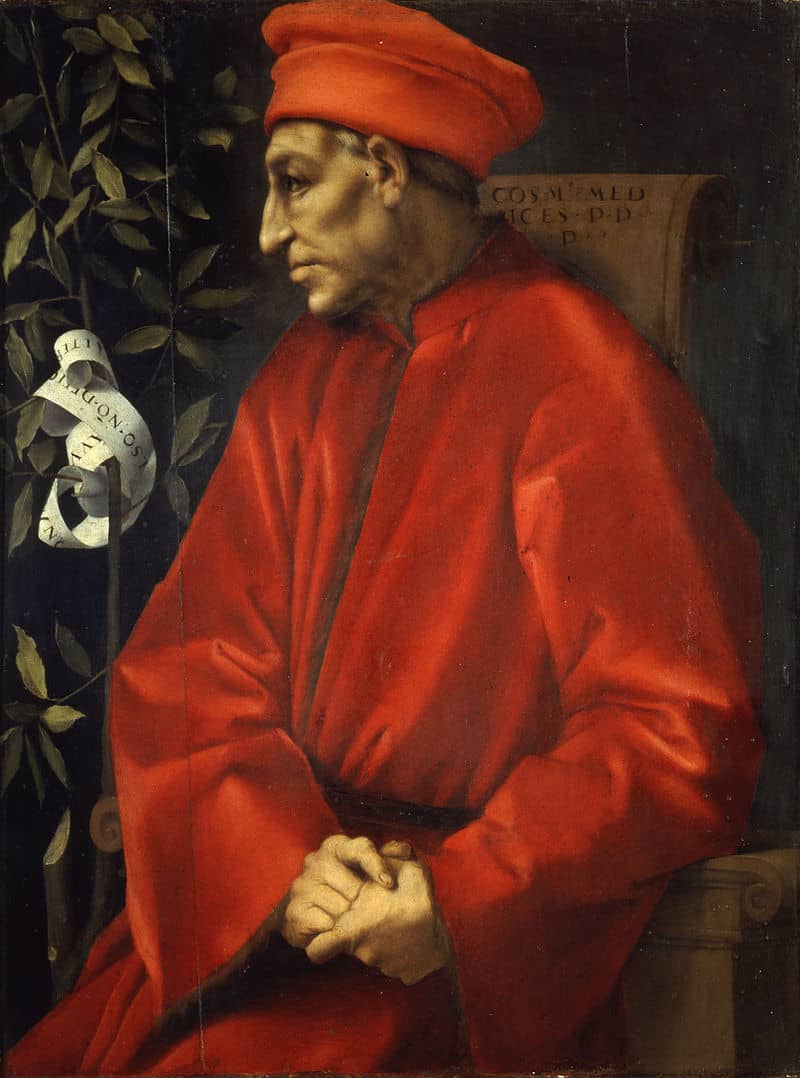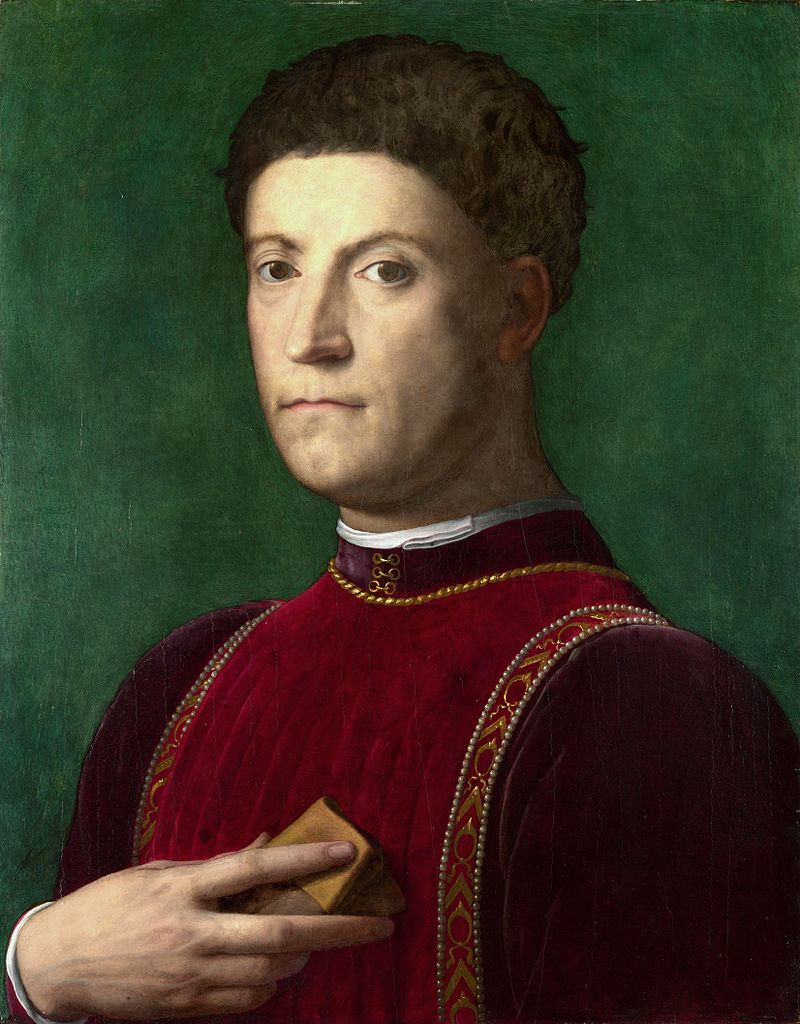Even though the art market is still considered to be exclusive and reserved for the lucky few, more and more people seem to be aware of its existence. Today, it seems almost impossible to find someone who has never come across names like Sotheby’s or Christie’s and our imagination is constantly fuelled by the headlines announcing new price records and gossiping about whooping sums spent at auctions. Art has been bought and sold for thousands of years, however, achieving the level of organisation of the art market we know today has been a long historical process.
Pontormo, Portrait of Cosimo de’ Medici the Elder, between circa 1518 and circa 1520, Collection: Uffizi Museum
Agnolo Bronzino, Portrait of Piero de’ Medici, between circa 1550 and circa 1570, oil on panel, collection: National Gallery
The oldest documented transaction involving a piece of art took place almost two and a half thousand years ago in ancient Greece. It’s taken a few more centuries for art to gain a special status and for its circulation to be regulated. Although we can see the beginning of this process in the ancient and medieval times, art was mostly acquired through commissions and directly from artists’ workshops.
The Renaissance brought a new wave of interest in antiquity and art in general, giving birth to first collections and patrons. The epicentre of these changes was fifteenth-century Florence where artists were competing against each other to draw the attention of aristocrats and gain their patronage. More generous patrons could even take their pupils into their household in exchange for providing them with works of art. One of the most powerful and famous art supporters of the era were the Medici, who employed artists as great as Botticelli or Michelangelo.
It’s important to remember this unique Renaissance form of the early art market has to be classified as primary – works were being acquired directly from their makers, usually through commission.
The earliest manifestation of the secondary art market – one in which artworks are resold and not purchased directly from their creator – can be traced back to the sixteenth century. Dealers who traded in goods such as furniture or clothes, often had paintings and sculptures on offer. As collecting and art appreciation grew in popularity, dealers of the time began specialising in art sales which gave rise to the profession of art dealer.

Complesso di San Lorenzo, source: Wikipedia, photo: Sailko
Edme-François Gersaint (1694–1750), considered to be the first modern art dealer who revolutionised the market, was the owner of a Parisian gallery often regarded as one of the first commercial ones. Gersaint was a pioneer who emphasized the importance of getting to know an artwork before purchasing it and introduced the emotional element to the art market. Thanks to the implementation of innovations such as printed catalogues containing detailed information about artists – something so common today – art dealers soon took over the market which until then had been dominated by artists’ workshops.
A hundred years later, Gersaint’s countryman, Pierre Durand-Ruel (1831-1922), the owner of another Parisian gallery, took an interest to the then unknown Impressionism. To promote this new movement, he began to present works by young, unknown artists among more established ones. He became the first art dealer to appreciate the avant-garde and promote young talents by covering all their costs and navigating their artistic development.
Around the eighteenth century, another important agent of the market entered the game. Sotheby’s and Christie’s, today the most recognisable auction houses in the world, were established in London. Initially, their area of focus were antiques but with time both grew to open multiple departments and offices around the globe, dealing in art ranging from ancient to contemporary.
The twentieth century turned out to be particularly generous for commercial art galleries. They were emerging one after another and opening branches on all continents, giving rise to the globalised art market we know today. Their private profit-oriented owners introduced a number of important solutions that still prove relevant a century later.
Leo Castelli, a New York gallerist, is recognised as one of the most progressive art dealers of the last century. He provided his artists with full support, ranging from technical needs to public relations, and was the first dealer to pay his pupils even when they weren’t creating new works. Thanks to establishing close relationships, Castelli managed to gather around him a group of loyal artists who included Andy Warhol and Jasper Johns. Castelli’s model is still praised and continued by many of his pupils, including Larry Gagosian, the famous art world mogul and owner of sixteen galleries around the world.

Paul Durand-Ruel, Pierre-Auguste Renoir, 1910, oil on canvas
Today we can experience the art market at the peak of its development with its traditional agents and mechanisms developed through ages still present. Its evolution, however, is not complete and today we can witness its shift towards the virtual world. Online auctions have become a standard practice and most commercial galleries offer their works online. Every year, more portals specialising in online sales emerge, becoming a new force of the market.
In the time of globalisation, the internet allows us to maintain close international cooperation and offers the buyer access to an unlimited number of objects. Using simple tools like Google search or public databases, we are able to access information such as catalogues raisonnes and determine the authenticity of an artwork on our own.
Interestingly, buying art online bridges the gap between the viewer and the creator. From the comfort of our home, we are able to access all information concerning the artist and often contact them directly. In a way, it’s like returning to the source – in virtual reality, everyone can become a Renaissance patron or venture out to discover promising young artists just like the first art dealers a hundred years ago.









